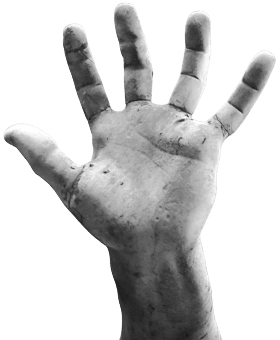Finger dislocations and fractures
As hands are involved so heavily in our daily activities, they are subject to extreme forces. When directed in the wrong way, bones and joints can be pushed to their limit and result in fractures and/or dislocations. Most of these can be treated very effectively if surgery and or therapy are instituted early enough. The important thing is to recognise that an injury has occurred and seek an accurate diagnosis and management plan promptly.
Fractures and dislocation of the fingers can be very complicated but in short, there are a few important things to understand. If you have a fracture or dislocation of your fingers, early and clear diagnosis and treatment is vital for an optimal outcome.
Finger dislocations
A dislocation of the finger can occur at any of the joints, but some are much more common than others. The knuckle joints in the fingers are referred to as the interphalangeal joints and the metacarpophalangeal joints. Significant support structures surround these joints and ensure stability of the fingers in our daily activities. As I have mentioned, should forces exceed the capabilities of these support structures, the joint will fail and a dislocation will result. In the fingers, this is quite often as a result of hyperextension, causing the joint to dislocate backwards or dorsally. There can also be dislocations towards the front or palmar surface, particularly in the distal (end) joint.
Distal interphalangeal joints
Dislocations of the distal interphalangeal joint can occur in either direction. When the dislocation is towards the front due to a hyperflexion injury, this is commonly described as a mallet finger. More often than not, the extensor tendon mechanism has torn from the back of the distal phalanx and is subsequently unable to extend the joint. The resulting deformity looks like a club or a mallet. These can often be managed non-surgically but at times, require surgical intervention if there is a significant bony fracture component, or if conservative management fails.
In the other direction, the flexor tendon can avulse from its insertion at the distal phalanx, resulting in an inability to flex the joint. Although this is not always associated with dislocation, it is an injury more likely to require surgical management. Colloquially, this is known as ‘jersey’ or ‘rugger finger’, due to its association with it occurring during football games or tackling, when the finger is caught in an opponent’s jersey.
Proximal interphalangeal joint
The proximal interphalangeal joint is the most fickle of the finger joints. It is commonly associated with fractures and dislocations and is the most difficult to manage. The natural history of injuries to this joint tends to be towards stiffness and the overall priority is to mobilise the joint as early as possible.
An extremely common injury here is seen from hyperextension of the joint, or the finger bending backwards. In this scenario, the tendon itself can fail (or tear), it can come off, or it can cause an avulsion fracture with a small piece of bone coming off at the insertion point on the middle phalanx. Either way, many of these injuries can be treated conservatively with very dedicated and specialised hand therapy and mobilisation.
In some circumstances, an open operation and reconstruction of the support structures around the joint is necessary. Once again, this requires a very focused and specialised rehabilitation program.
Any dislocation or hyperextension injury to the proximal interphalangeal joint or the middle joint of the finger should be investigated thoroughly and a diagnosis made. If the injury is neglected, significant and irreversible deformities of the joint can result and are very difficult to correct. The worst thing you can do is nothing.
Metacarpophalangeal joint
Injuries around the metacarpophalangeal joint are much less common but similar sprains and fractures can occur. In the fingers, most of these are treated conservatively however, with significant bony components a surgical operation may be required.
In the thumb, a particular type of injury around the metacarpophalangeal joint involves hyperextension or retraction of the thumb away from the rest of the hand. This could occur via a direct blow or with chronic use. The resulting injury is that the collateral support ligament on one side of the joint is injured and instability follows. Colloquially, this is known as a ‘gamekeeper’s’ or ‘skier’s thumb’ and in an acute setting, can mostly be treated conservatively. However, there are circumstances where this injury will not heal sufficiently without surgical management. It is extremely important to have these injuries looked at by a specialist to decide whether surgical intervention is warranted. As with any injury, the earlier appropriate treatment is begun, the better the result.
This is only a short summary of some dislocations that can occur in the fingers. The over-riding principle is that these injuries should not be ignored, and a proper diagnosis should be made. If the treatment given is timely and appropriate, a full recovery can be expected in most cases. A neglected dislocation can result in permanent deformity.
Please see your doctor if you are concerned about having suffered one these finger injuries.
